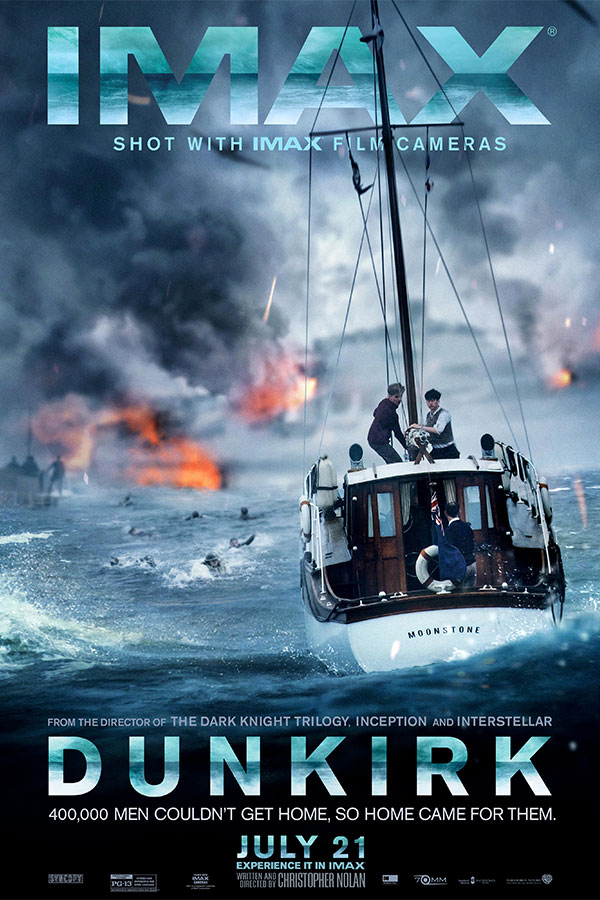[The new film Dunkirk in full IMAX format promises to create compelling presence experiences. This short story from The Verge includes the 4 minute “Behind the Frame” featurette. A detailed story in the Los Angeles Times includes this:
“[A]s Nolan sees it, ‘Dunkirk’ is not a war movie per se but rather a kind of Hitchcockian suspense thriller, and his goal for the picture, which he filmed almost entirely in IMAX, is to create an immersive white-knuckle ride that puts the viewer in the shoes of soldiers fighting for survival. ‘We’re trying to create an experience that I talk about as being like virtual reality without the goggles,’ he said. ‘I think what’s exciting about movies right now, as opposed to television or novels or the stage, is the cinema of experience, where you’re sitting in a room with a lot of different people and you’re being taken to a world you’d never normally travel to.’”
SlashGear has information about a VR experience promoting the film, and Nolan wrote a first-person essay on making Dunkirk for The Telegraph (which also includes the official trailer). –Matthew]

Watch Christopher Nolan explain why he thinks Dunkirk in IMAX is like ‘virtual reality without the goggles’
A bold statement from IMAX’s biggest fan
by Bryan Bishop@bcbishop
July 12, 2017
Christopher Nolan’s upcoming film Dunkirk is set to be the biggest 70mm film release in 25 years, and in an exclusive new clip the filmmaker explains why shooting so much of it in IMAX became essential to his creative vision. The director has used IMAX for specific sequences in his films for years, but Dunkirk — which tells the true-life story of the evacuation of Allied soldiers in France — represents his most ambitious use of large-format film to date. About 70 percent of the film was shot on IMAX, with the remaining footage filmed on 65mm film.
IMAX cameras are notoriously large and heavy, making them difficult for use in tight quarters or handheld shots — scenarios that presented particular challenges given the extensive cockpit photography and other sequences in Dunkirk. However, as Nolan explains in the clip, the visual clarity of the larger format made the trade-off worth it. “The immersive quality of the image is second to none,” Nolan says. “We really try and create the sensation of virtual reality without the goggles.”
Now, that statement on its own is an incredible stretch, ignoring the fact that mediums like VR offer far more in terms of interaction, audience agency, and field of view than even the largest film format can. They’re simply not comparable. But in terms of the cinema-going experience itself, IMAX is arguably the most immersive format out there, just in terms of aspect ratio alone. In both IMAX 70mm film screenings and some IMAX Laser screenings, the film will be presented in an aspect ratio of 1.43:1 — a towering, square image that can fill the entire field of view depending on where an audience member sits in the theater.
Those screenings will be somewhat hard to come by, however. The movie is also being presented in a number of different formats that don’t take advantage of the taller aspect ratio that Nolan’s IMAX photography allows for. Thankfully, the Dunkirk website has a tool to help audiences determine where they can see the optimal version of the film. Dunkirk opens on July 21st.